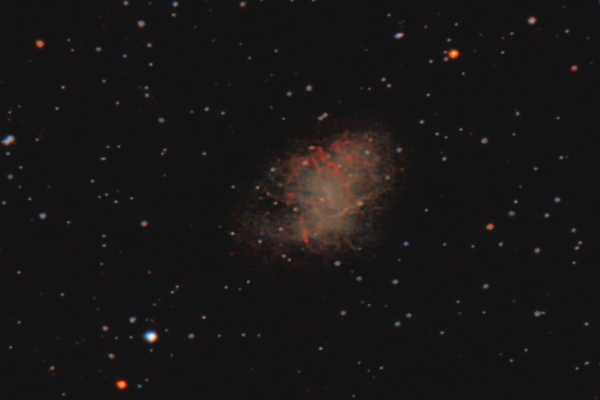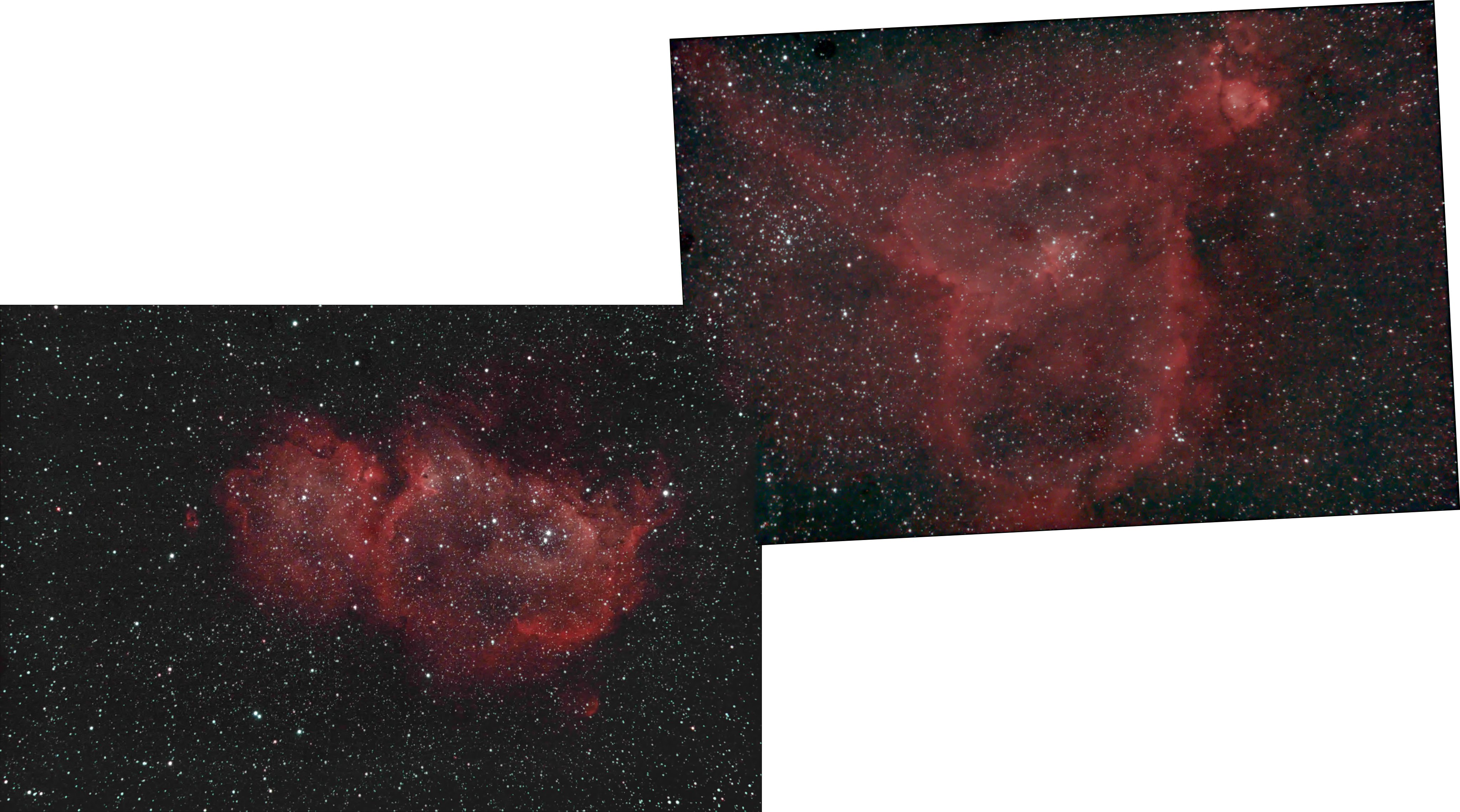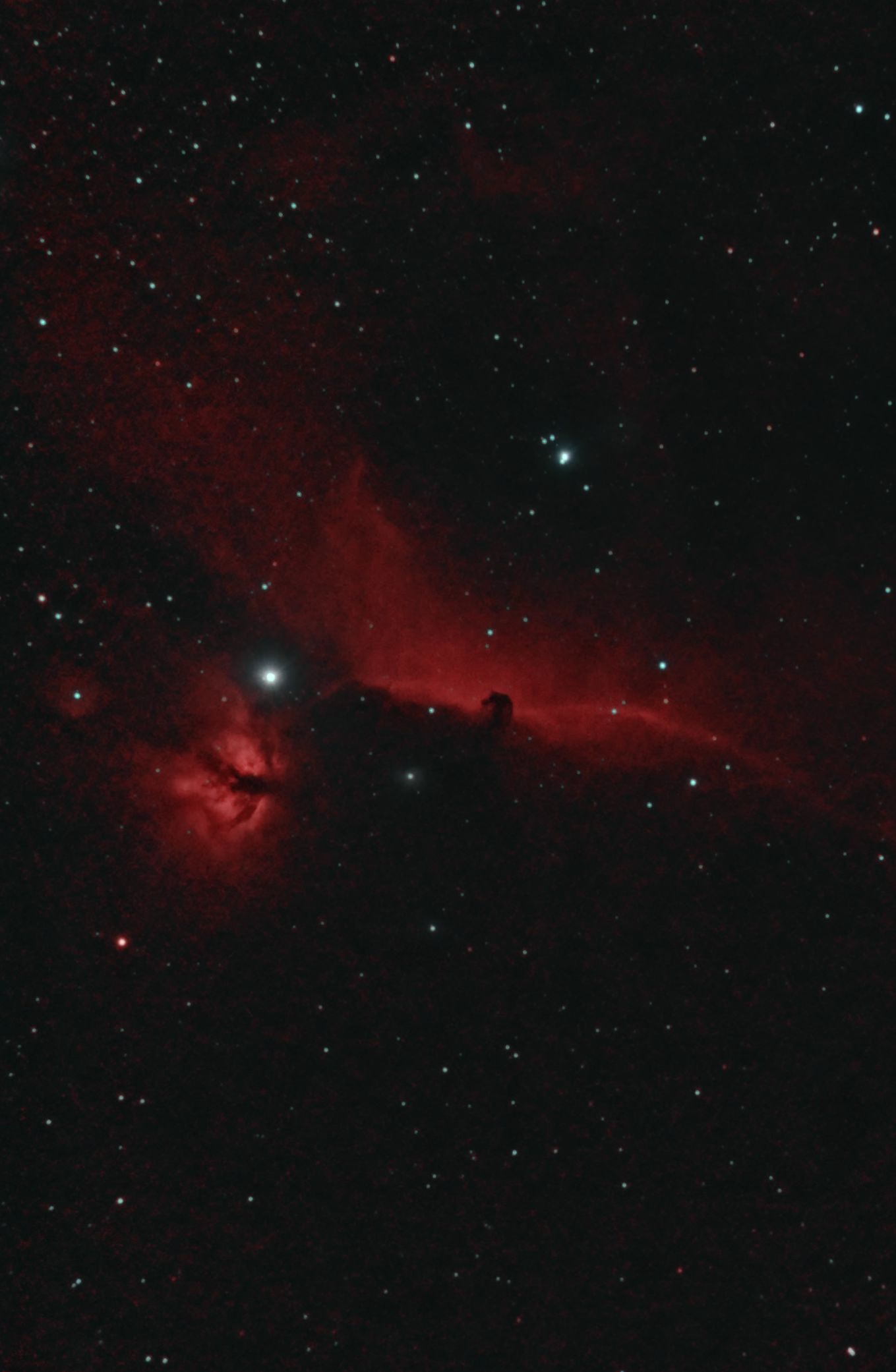2021 : 2020 : 2019 : 2018 : 2017 : 2016 : 2015
Image of the Month for January 2019: Comet 46/p Wirtanen
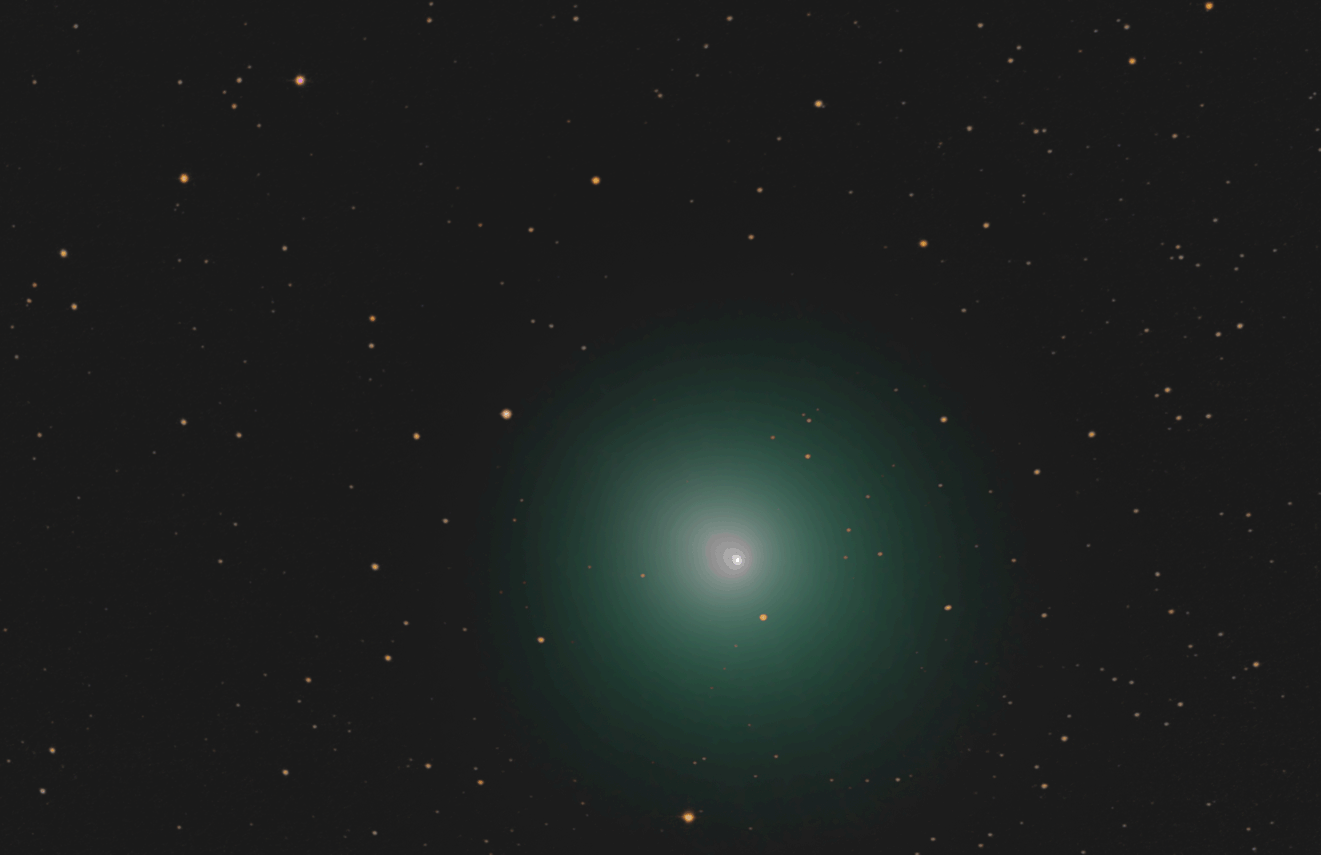
Something a bit different this month, an animation of Comet 46/p Wirtanen taken on the 13 December 2018. Stacked using Deep Sky Stacker. Skywatcher 130P-DS telescope on HEQ5 mount, Canon 45D astro-modded and cooled.
Image of the Month for February 2019: M1, The Crab Nebula
The Crab Nebula, M1, the remains of a supernova recorded as a 'guest star' in 1054 and given its name in 1840 by William Parsons. The object is expanding so fast that differences can be seen in images taken 10 or 20 years apart. Skywatcher 130P-DS telescope on HEQ5 mount, Canon 45D astro-modded and cooled.
Image of the Month for March 2019: The Hickson 44 Galaxy Group
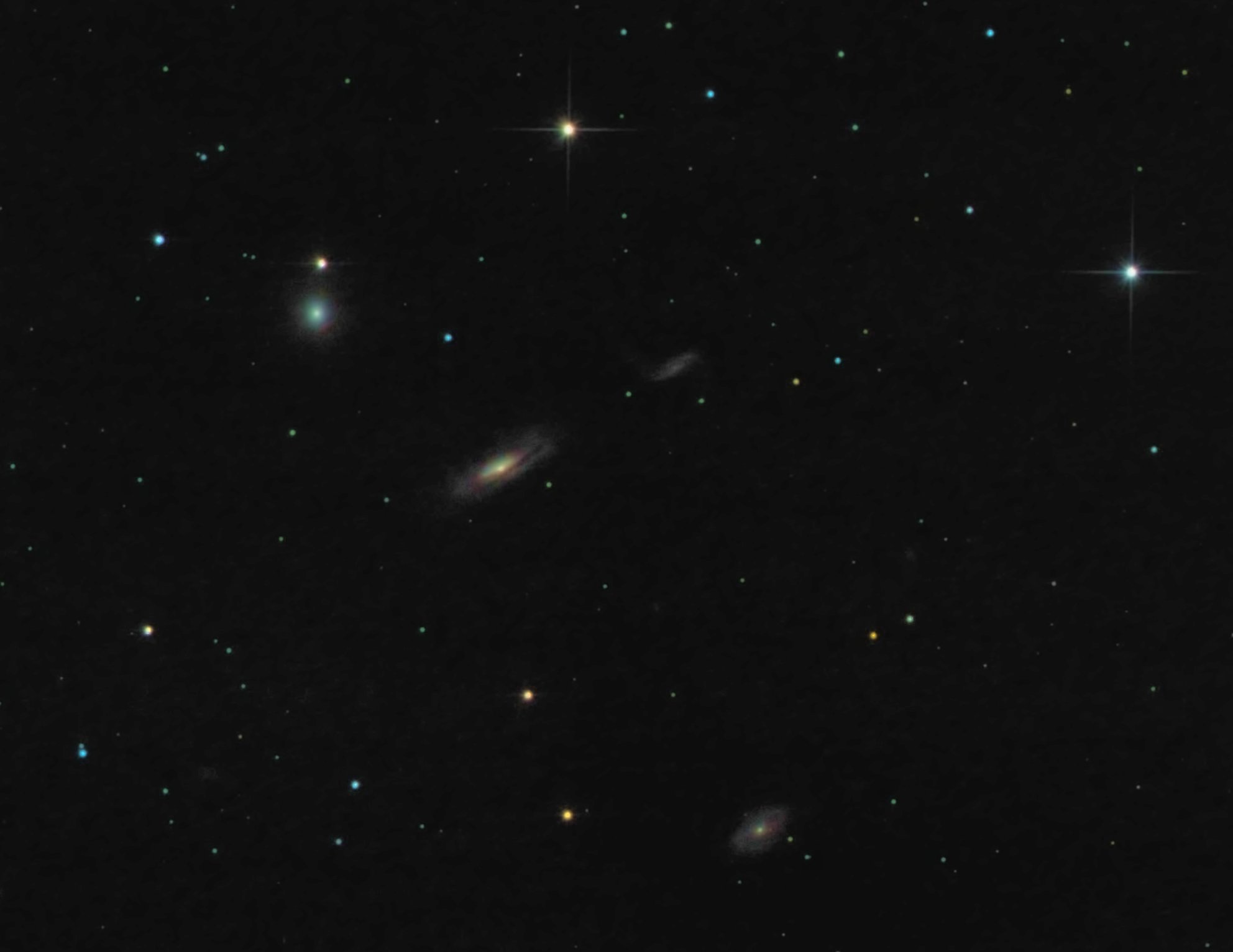
The snappily named and rarely imaged Hickson 44 Galaxy Group is located in the constellation Leo, at the 'back' of the lion's head. It is a small collection of interacting galaxies.
Image of the Month for April 2019: M101, the Pinwheel Galaxy
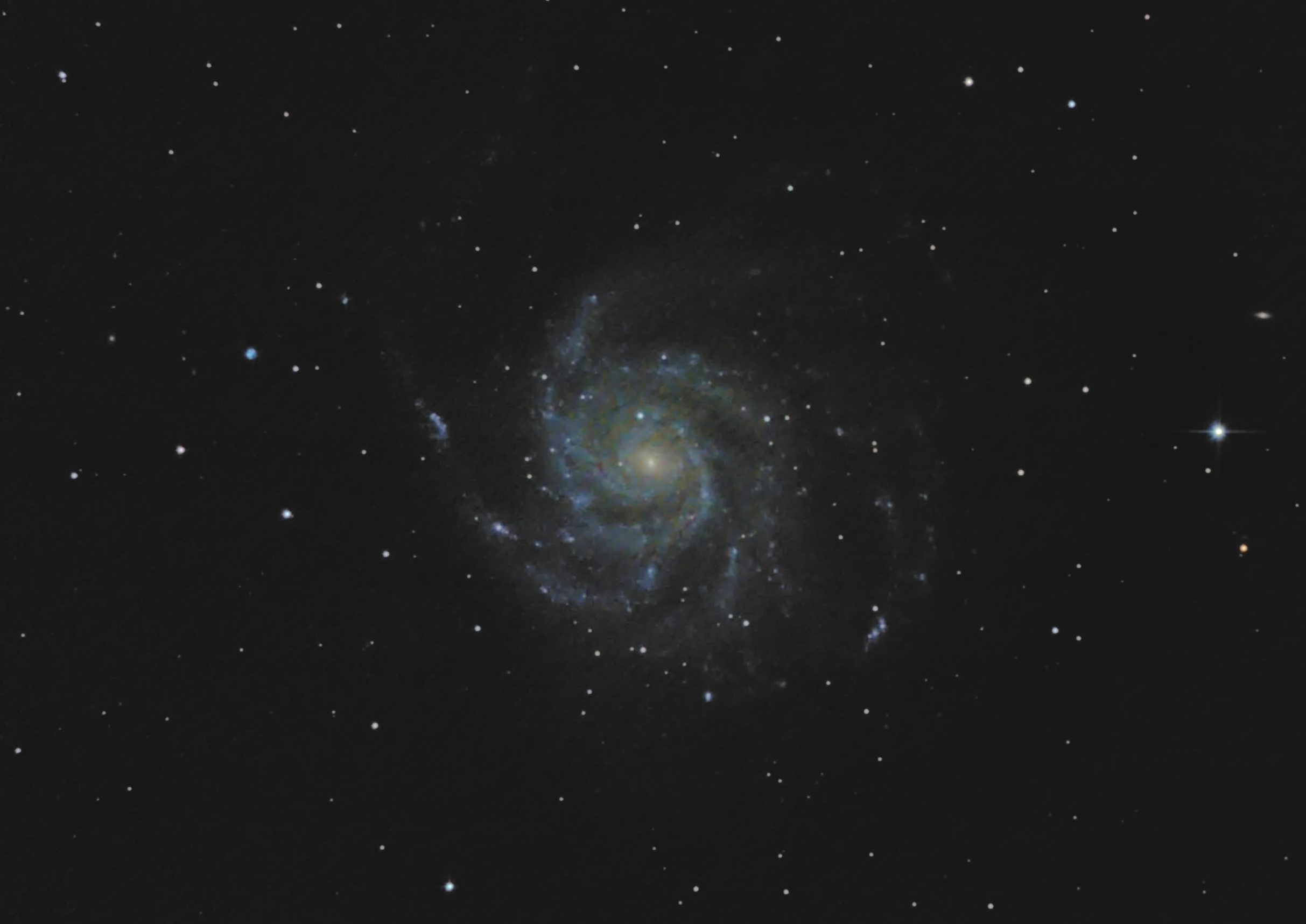
The Pinwheel Galaxy played an important step in our understanding of galaxies as separate 'island universes' beyond our own Milky Way galaxy, when Lord Rosse was the first person to identify its spiral structure.
Image of the Month for May 2019: NGC4631, the Whale Galaxy
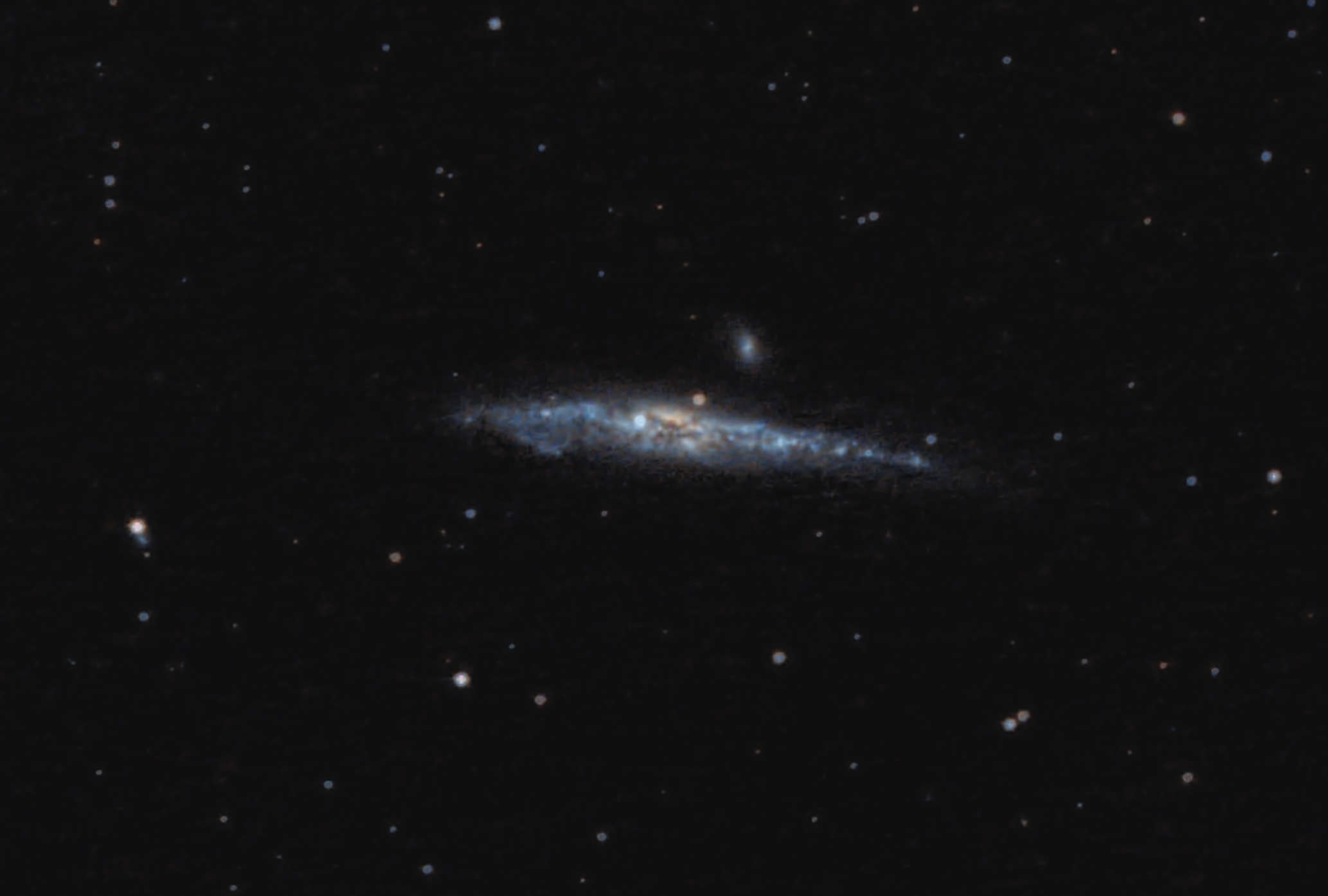
Also known as the Herring Galaxy this is a spiral galaxy, seen almost edge-on with a small companion galaxy. Taken using Skywatcher 130P-DS scope on HEQ-5 mount with a cooled and astro-modded Canon 450D. 63 two-minute exposures.
Image of the Month for June 2019: M13 The Great Globular Cluster in Hercules
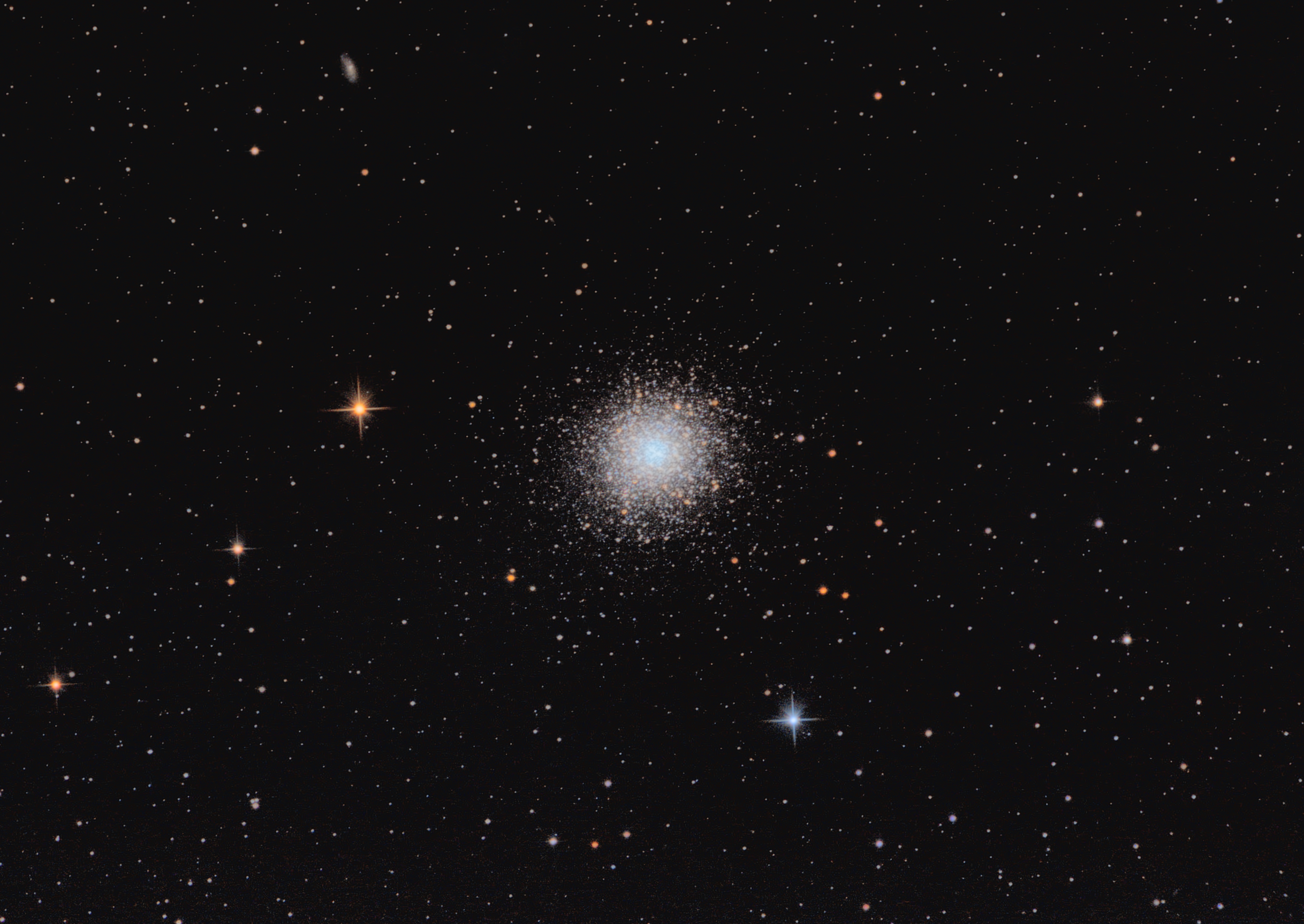
M13 is bright enough to be seen as a small fuzzy patch in dark skies, through a medium sized telescope you can start to see the stars that make it up. Taken using Skywatcher 130P-DS scope on HEQ-5 mount with a cooled and astro-modded Canon 450D. A combination of many 30-second exposures taken in 2018 and about 40 120-second exposures taken in May 2019 has helped in resolving stars to the centre of the cluster.
Image of the Month for July 2019: Jupiter
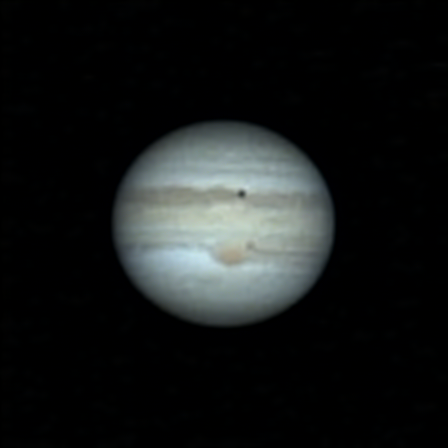
Jupiter is very low down in the sky this year, making imaging a real challenge. In this image from 20 June 2019, the moon Io passes in front of the planet leaving a clear shadow, although the moon itself is a barely visible yellowish patch to the right of the shadow. Below, the Red Spot is unmistakeable, but this 300-year-old storm is shrinking. Will it disappear soon? Taken with a Skywatcher 150PL telescope and ZWO ASI120MC camera and a ZWO Atmospheric Dispersion Corrector, to offset the 'colour smearing' caused by the planet being so low in the sky.
Image of the Month for August 2019: Partial Lunar Eclipse
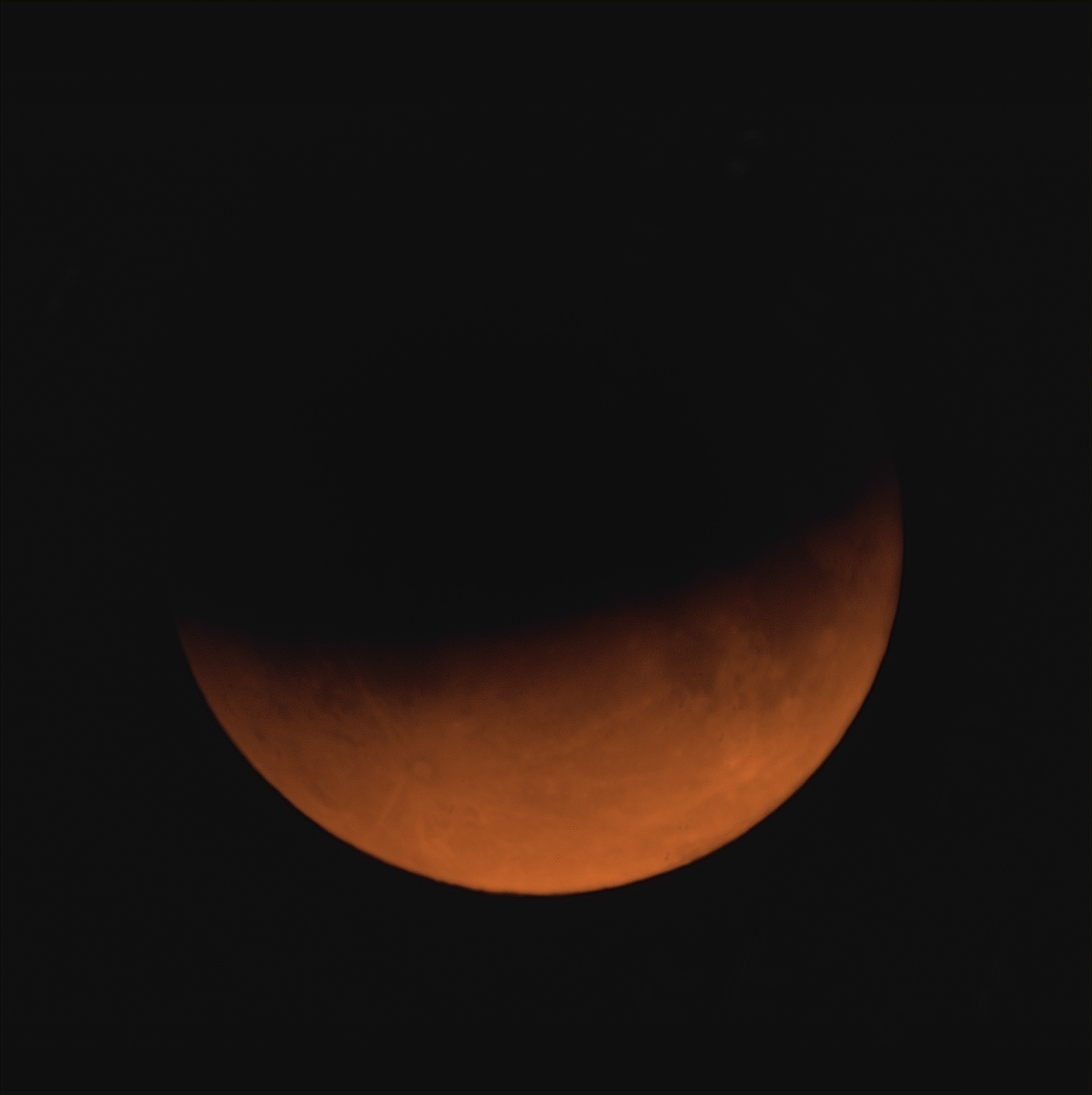
The partial Lunar Eclipse on 16 July 2019 took place on the fiftieth anniversary of the launch of Apollo 11, so gathering with fellow members of Rosliston Astronomy Group was a great way to mark the occasion. Despite early cloud, satellite imagery from online weather websites showed that we would probably be lucky, and the moon appeared from behind cloud about twenty minutes after it rose. We were able to view about an hour and a half of the spectacle, as scattered cloud came and went, before another big bank of cloud moved across, so we saw the point of deepest eclipse. This image is from fairly early on, taken with a Canon D1000 mounted on a Celestron C90 Mak, and stacked from about fifteen images that were clear of cloud.
Image of the Month for September 2019: The Swan Nebula, M17
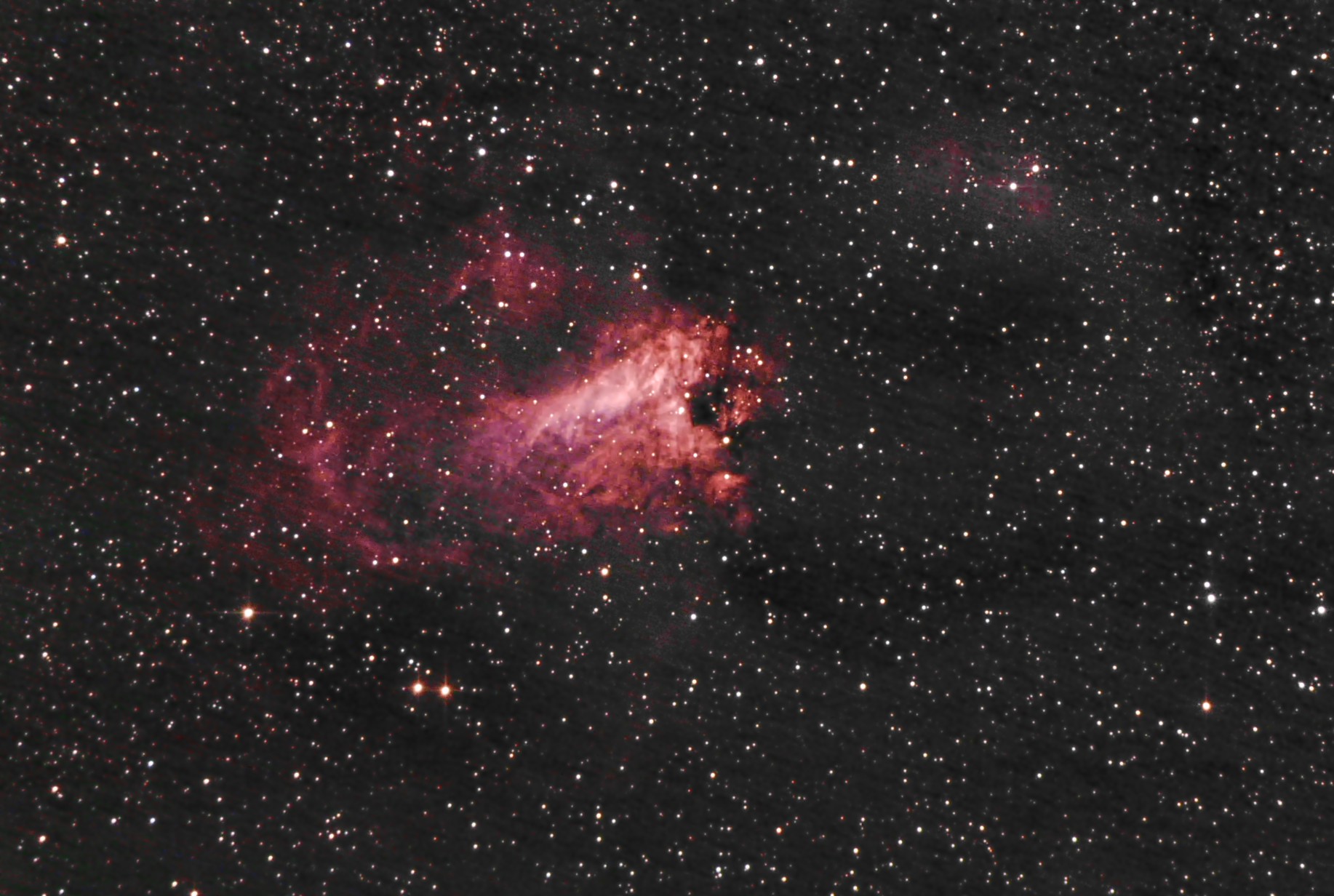
The Swan or Omega Nebula is a rich and complex area of hydrogen-alpha emission nebula in the constellation Sagittarius. This is one of the richest parts of the night sky, as the centre of the Galaxy with its supermassive black hole lies in this direction. It is hard to image this part of the sky well from the UK as everything is close to the horizon, but on 25 August 2019 there were almost perfect conditions combining exceptional transparancy and seeing - in other words the sky was clear of clouds and dust and very steady, a combination that minimises light pollution and the sharpness of image you can achieve.
Image of the Month for October 2019: The Crescent Nebula, NGC6888
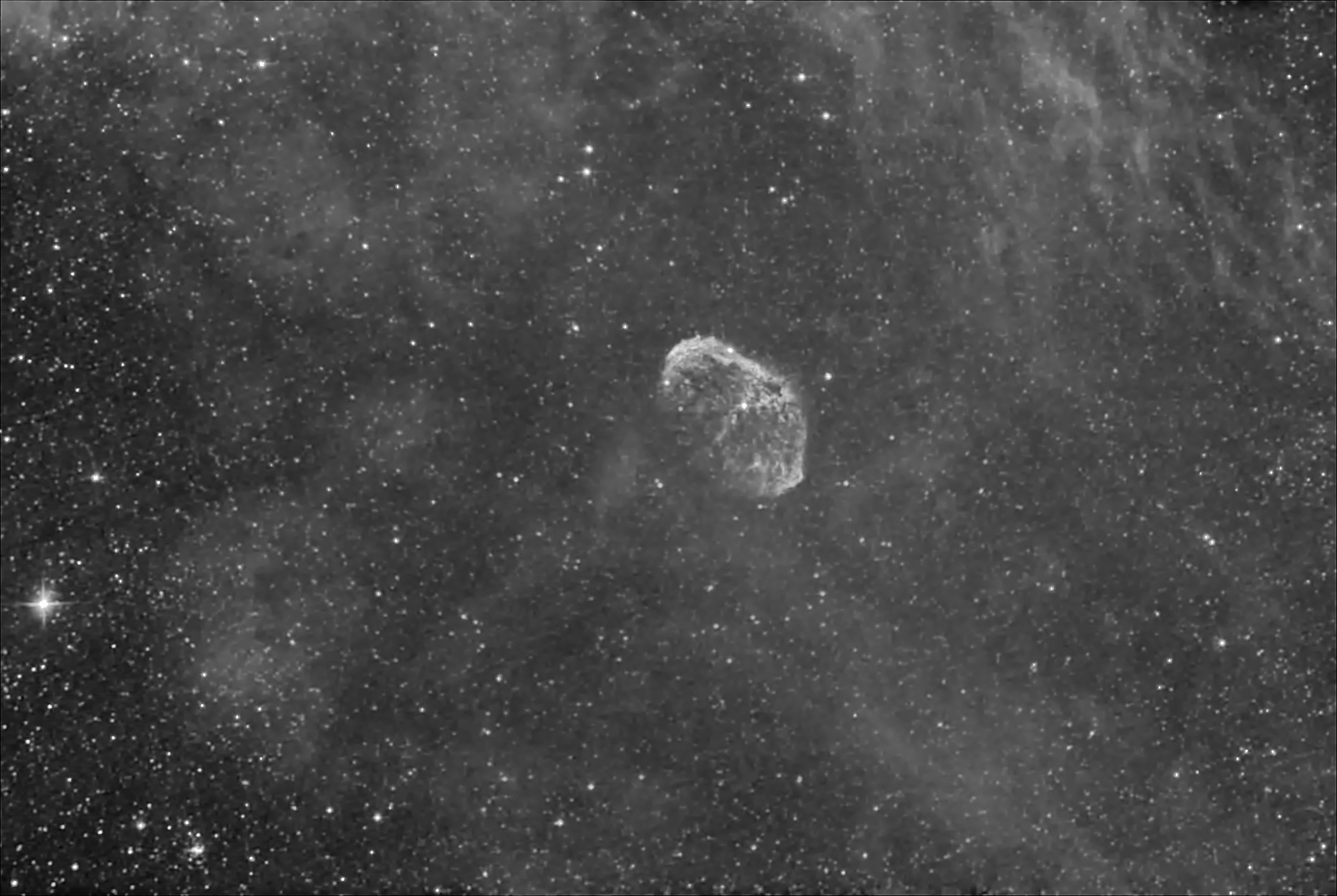
The Crescent Nebula is a complex emission nebula formed by the emissions from Wolf-Rayett star WR136 interacting with gasses it lost in the past, forming multiple shock waves. Although a fairly small target for photography, it lies against fainter but huge emission nebulae in the constellation of Cygnus making it an excellent choice for wide-field photography, especially for narrowband imaging as here, where a Baader 7nm Hydrogen Alpha filter was used.
Image of the Month for November 2019: The Heart and Soul Nebulas
Image of the Month for December 2019: The Flame and Horsehead Nebulas
Perhaps the most famous and familiar nebula to non-astronomers, the Horsehead is a cloud of dark dust silhouetted against the curtain of red emission nebula behind. The Flame Nebula is another bright nebula. This image was taken using an Optolong L-Enhance tri-band nebula filter using a Canon 450D and a 66mm ED telescope.
This well-known pair of nebulas lying between the constellations of Cassiopeia and Perseus are huge clouds of hydrogen. Young stars near their centres have pushed the gas outwards away from them and the 'shock waves' themselves have become nurseries for even younger stars. These two images were taken using an Optolong L-Enhance tri-band nebula filter using a Canon 450D and a 66mm ED telescope. The individual images were stitched together in Photoshop.
